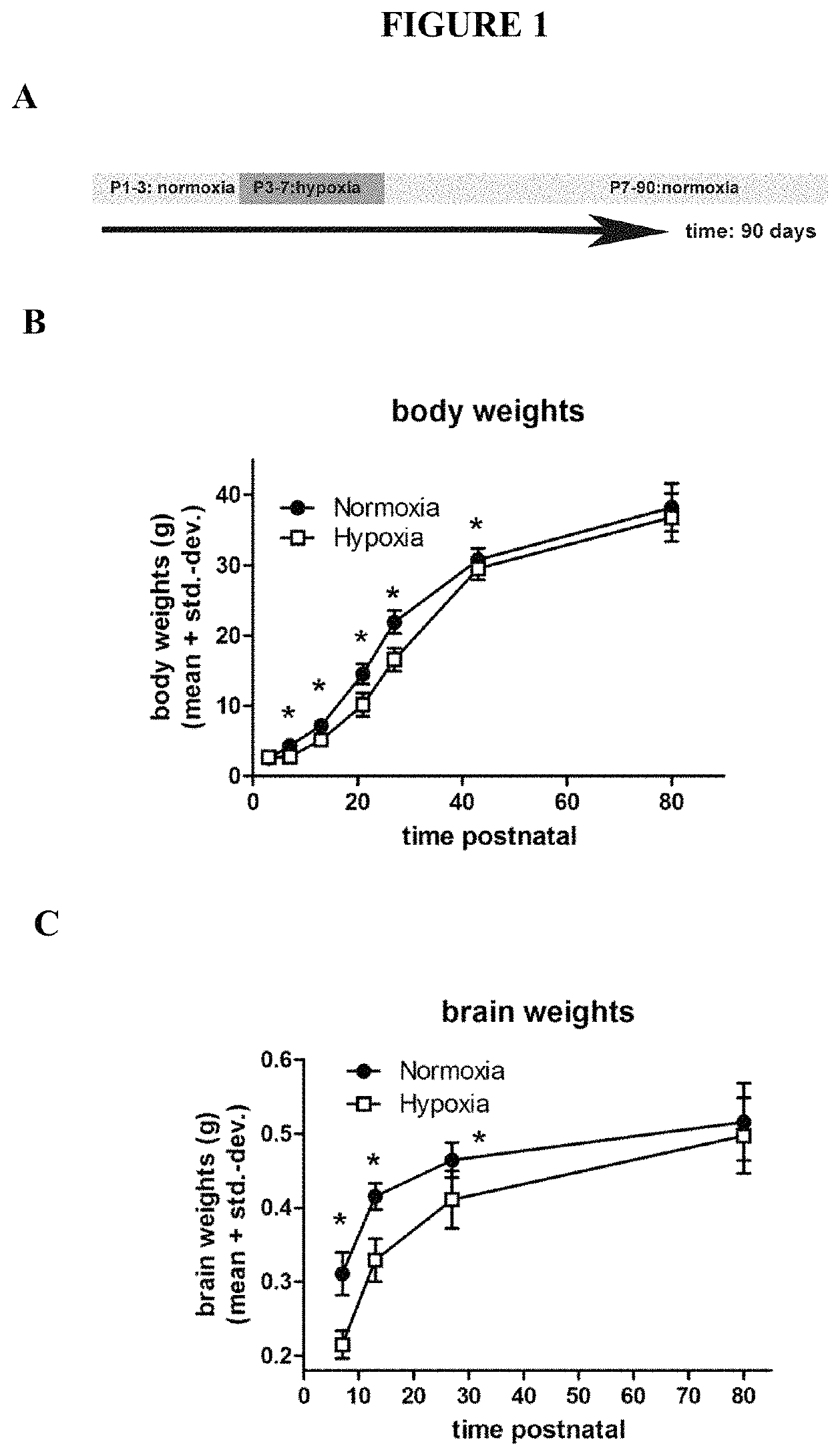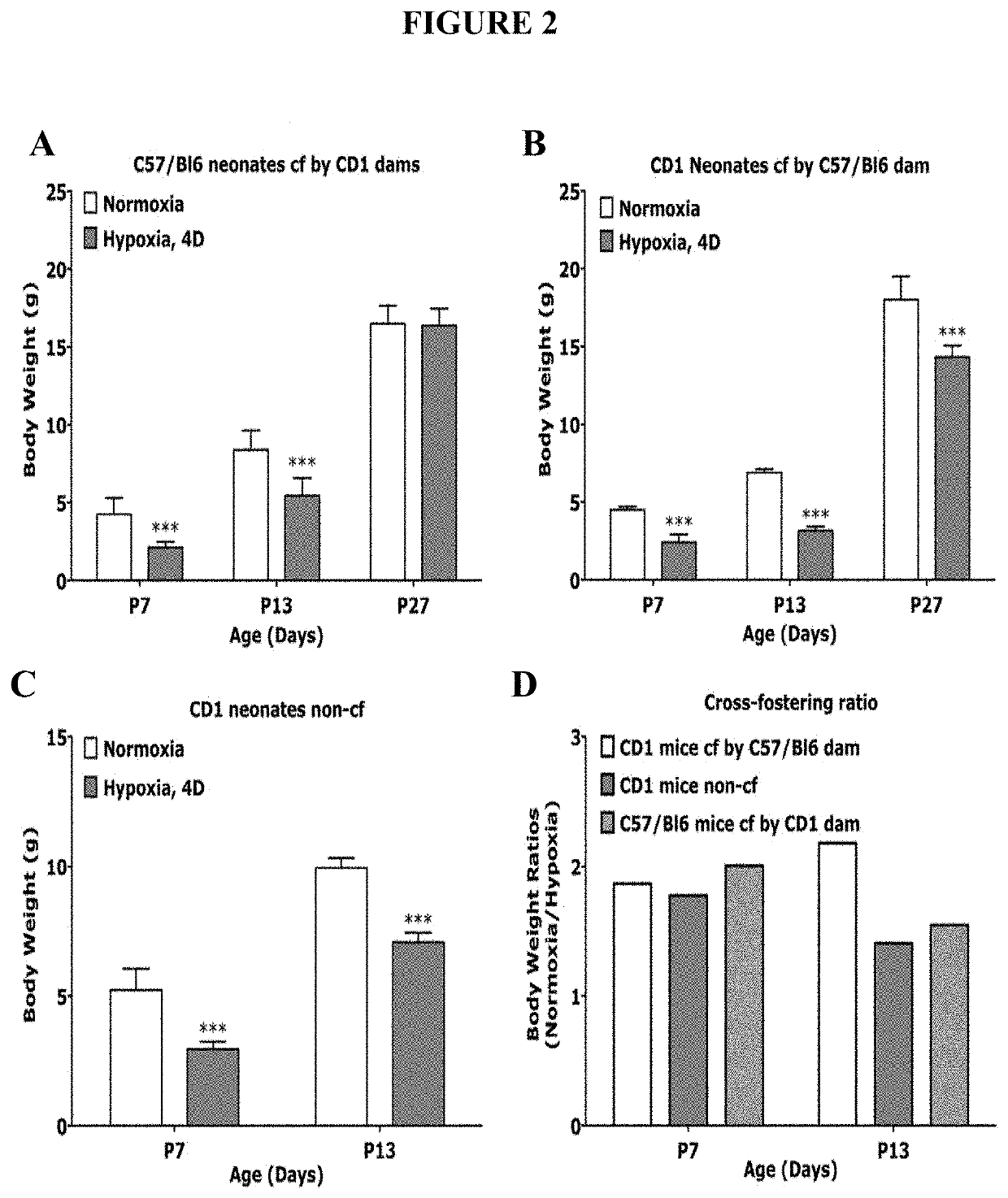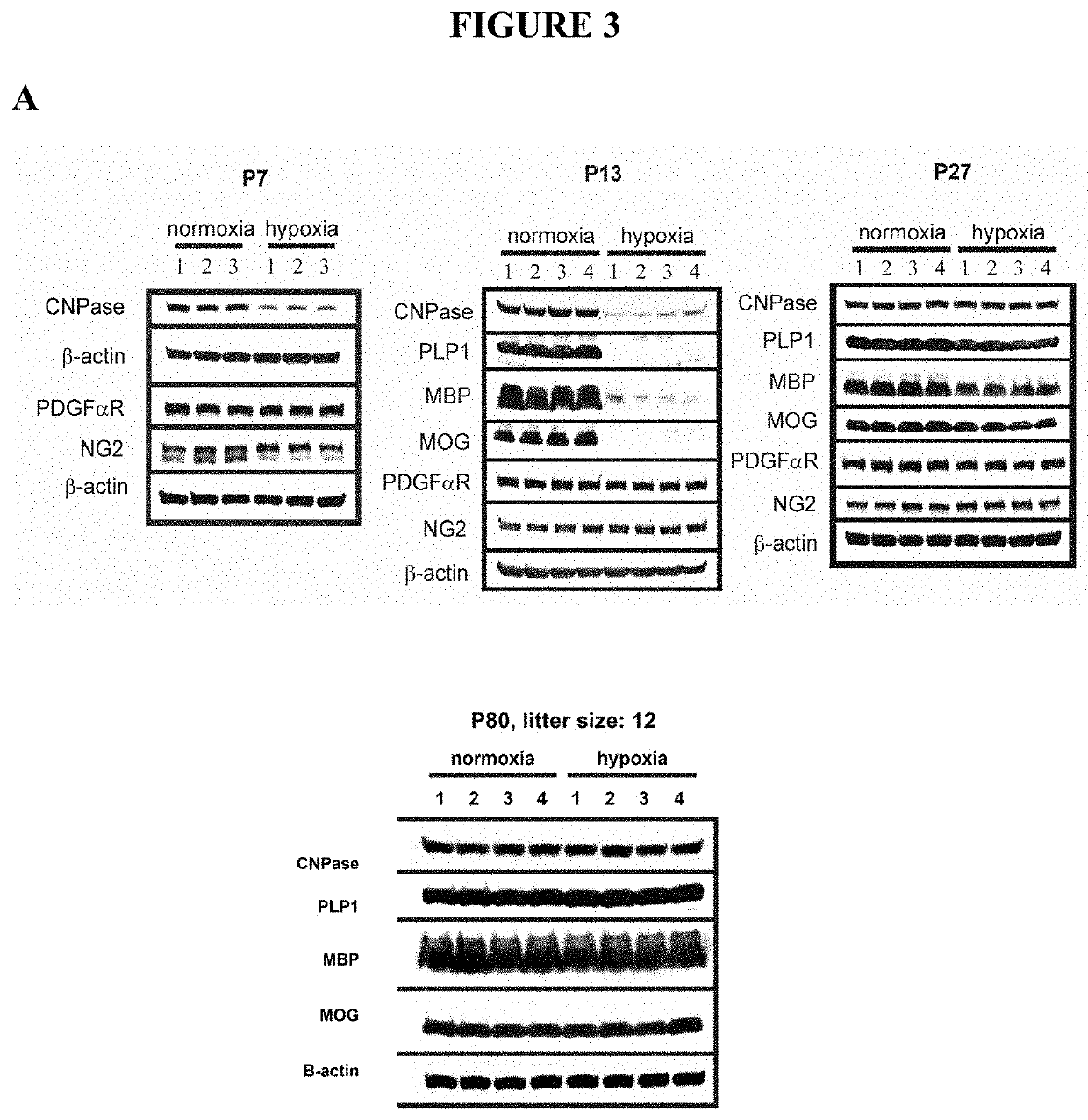Treatment of neonatal hypoxia including impairments or effects thereof
a neonatal hypoxia and impairment technology, applied in the field of neonatal hypoxia and associated white matter disease or injury, can solve the problems of cerebral palsy, nervous system and developmental problems, premature babies are at the greatest risk of the disorder, etc., to improve or improve one or more of the symptom or parameter associated, the frequency or development of neuromotor or neurodevelopmental defects is reduced, and the effect of preventing neuromotor deficits
- Summary
- Abstract
- Description
- Claims
- Application Information
AI Technical Summary
Benefits of technology
Problems solved by technology
Method used
Image
Examples
example 1
Animal Model of PVL
[0162]Neonatal white matter injury (nWMI), particularly Periventricular leukomalacia (PVL), is an increasingly common cause of cerebral palsy in premature infants resulting predominantly from hypoxic injury to progenitor cells, including those of the oligodendrocyte lineage. Existing mouse models utilize prolonged periods of hypoxia during the neonatal period, but this requires complex cross-fostering of pups, and prolonged hypoxia exposed mice exhibit poor growth and high mortality rates.
[0163]Given the link between hypoxic stress and the pathogenesis of PVL, a number of investigators have modeled the disease by exposing neonatal rodent pups to various degrees and durations of hypoxia (Back et al., 2006; Chahboune et al., 2009; Douglas et al., 2007; Fagel et al., 2009; Ganat et al., 2002; Kanaan et al., 2006; Zhou et al., 2008). In both mice and rats, exposure to 9-11% oxygen for 7 to 30 days during the first month of life yields a spectrum of white matter diseas...
example 2
Antibody Treatment of Hypoxia-Mediated PVL
[0312]The rate of cerebral palsy (CP) has increased steadily over the past few decades to its current incidence of more than 3 per 1000 live births, with 800000 Americans affected as of 2009. Much of this increase is due to the improving rate of survival of premature neonates born prematurely and at very low birth weight. Over the course of infancy and childhood, these former preemies often display motor deficits and cognitive-behavioral disturbances that correlate closely with the neuropathology of modern-day periventricular leukomalacia (PVL). White matter disease predominates in PVL and is manifest as diffuse hypomyelination and reduced white matter volume. These abnormalities appear to result from the selective death or disordered development of the preoligodendrocyte (pre-OL) during episodes of hypoxia-ischemia (H-I) (18). Because most OL progenitors are predisposed to hypoxia-ischemia (H-I) injury due to their predominantly periventric...
example 3
[0331]A novel model of PVL has been developed in which neonatal mice exposed to chronic hypoxia (10% O2) from postnatal days 3 (P3) until P7 (see Example 1) develop extensive hypomyelination and persistent neuromotor deficits throughout adulthood. While myelin quantity normalizes by adulthood, myelin quality however remains poor and is potentially responsible for the observed motor phenotype (4, 5).
[0332]Human antibodies that stimulate remyelination and function in models of primary demyelination have been previously described (6-14). The human antibody HIgM22 recently entered phase I clinical trials in multiple sclerosis patients (ClinicalTrials.gov Identifier: NCT01803867. “An Intravenous Infusion Study of rHIgM22 in Patients With Multiple Sclerosis”). Another human antibody, HIgM12, induced functional improvement during the chronic axonal phase of Theiler's virus infection (14) and enhanced survival in SOD mice (a model of amyotrophic lateral sclerosis, or ALS). Both HIgM22 and H...
PUM
| Property | Measurement | Unit |
|---|---|---|
| temperature | aaaaa | aaaaa |
| Tm | aaaaa | aaaaa |
| half life | aaaaa | aaaaa |
Abstract
Description
Claims
Application Information
 Login to view more
Login to view more - R&D Engineer
- R&D Manager
- IP Professional
- Industry Leading Data Capabilities
- Powerful AI technology
- Patent DNA Extraction
Browse by: Latest US Patents, China's latest patents, Technical Efficacy Thesaurus, Application Domain, Technology Topic.
© 2024 PatSnap. All rights reserved.Legal|Privacy policy|Modern Slavery Act Transparency Statement|Sitemap



